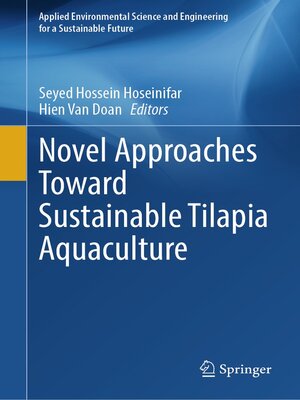Novel Approaches Toward Sustainable Tilapia Aquaculture
ebook ∣ Applied Environmental Science and Engineering for a Sustainable Future
By Seyed Hossein Hoseinifar

Sign up to save your library
With an OverDrive account, you can save your favorite libraries for at-a-glance information about availability. Find out more about OverDrive accounts.
Find this title in Libby, the library reading app by OverDrive.



Search for a digital library with this title
Title found at these libraries:
| Library Name | Distance |
|---|---|
| Loading... |
The global human population will reach nine billion by 2050, and seafood is projected to be the primary food source to sustain such a large population. According to a recent World Bank report, aquaculture will be the prime source of seafood by 2030. Tilapia is one of the promising species for commercial aquaculture and one of the second most farmed fish worldwide. Given the issues raised by Antibiotic misuse in intensive aquaculture, such as the occurrence of resistant bacteria, it is necessary to develop environment-friendly strategies that could be used to improve production in a sustainable manner. Also, there is a need to establish the best aquaculture practice (BAP) approaches to avoid significant disruption to the ecosystem, the loss of biodiversity, and substantial pollution impact on the environment.
The book covers the recent findings regarding sustainable tilapia farming through environment-friendly approaches. This book contains chapters that cover the current status of world tilapia farming and the concept of sustainability of tilapia culture (Chap. 1). Chap. 2 discusses the health management of tilapia with a particular focus on various diseases and treatments. Chap. 3 provides an updated view of the possible effects of feed additives on tilapia reproductive performance. Chap. 4, 5, and 6 cover the recent findings on the gut microbiota of tilapia with a particular focus on structure and modulation. Chap. 7 focuses on the use of medicinal plants for sustainable tilapia farming. Chap. 8 provides insights into the application of alternative protein sources to decrease fish meal consumption. Chap. 9 highlights the importance of culture systems for the development of sustainable tilapia aquaculture. We believe the current book will be very helpful to academics, researchers, and policy-makers in aquaculture.







